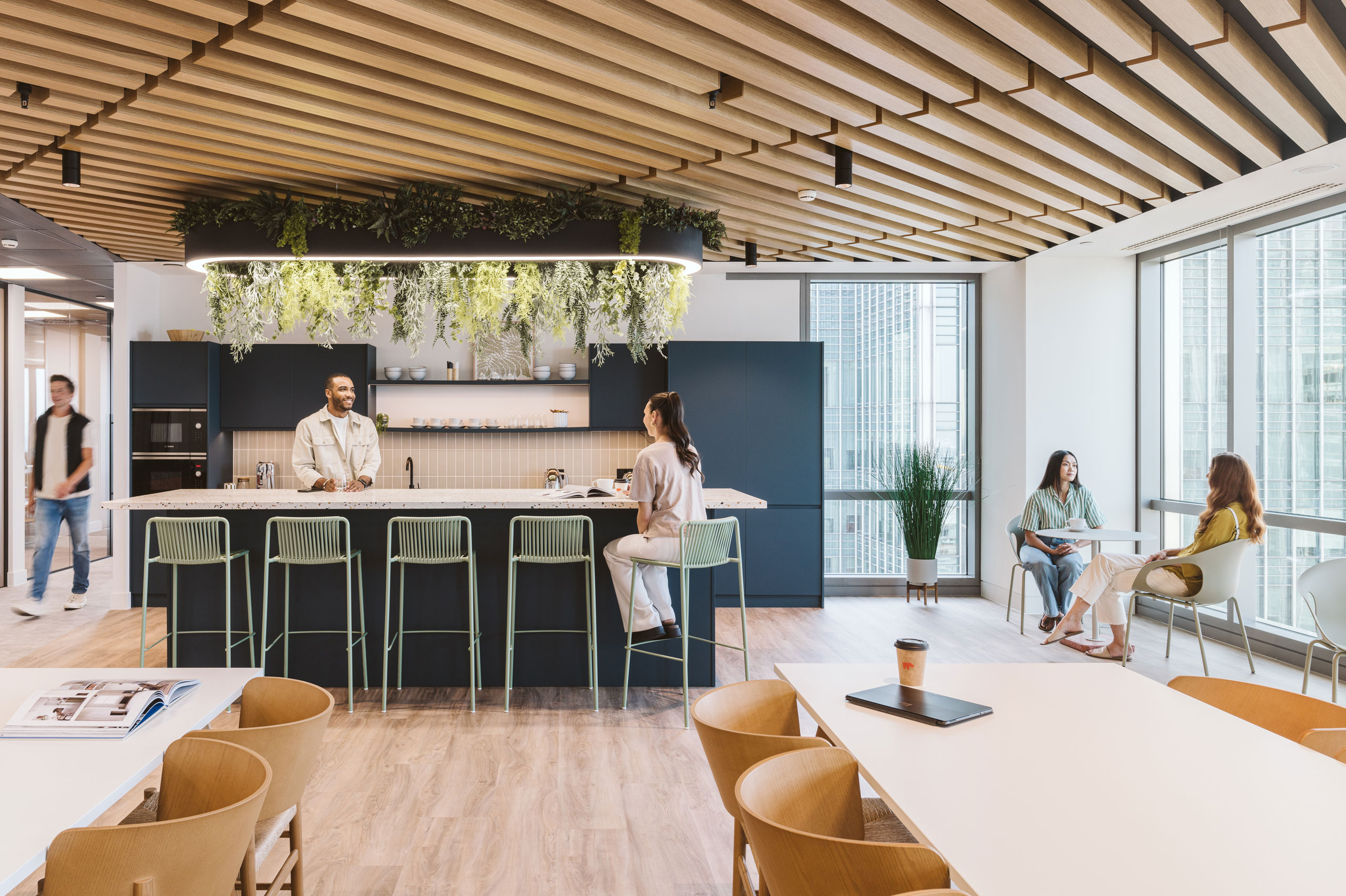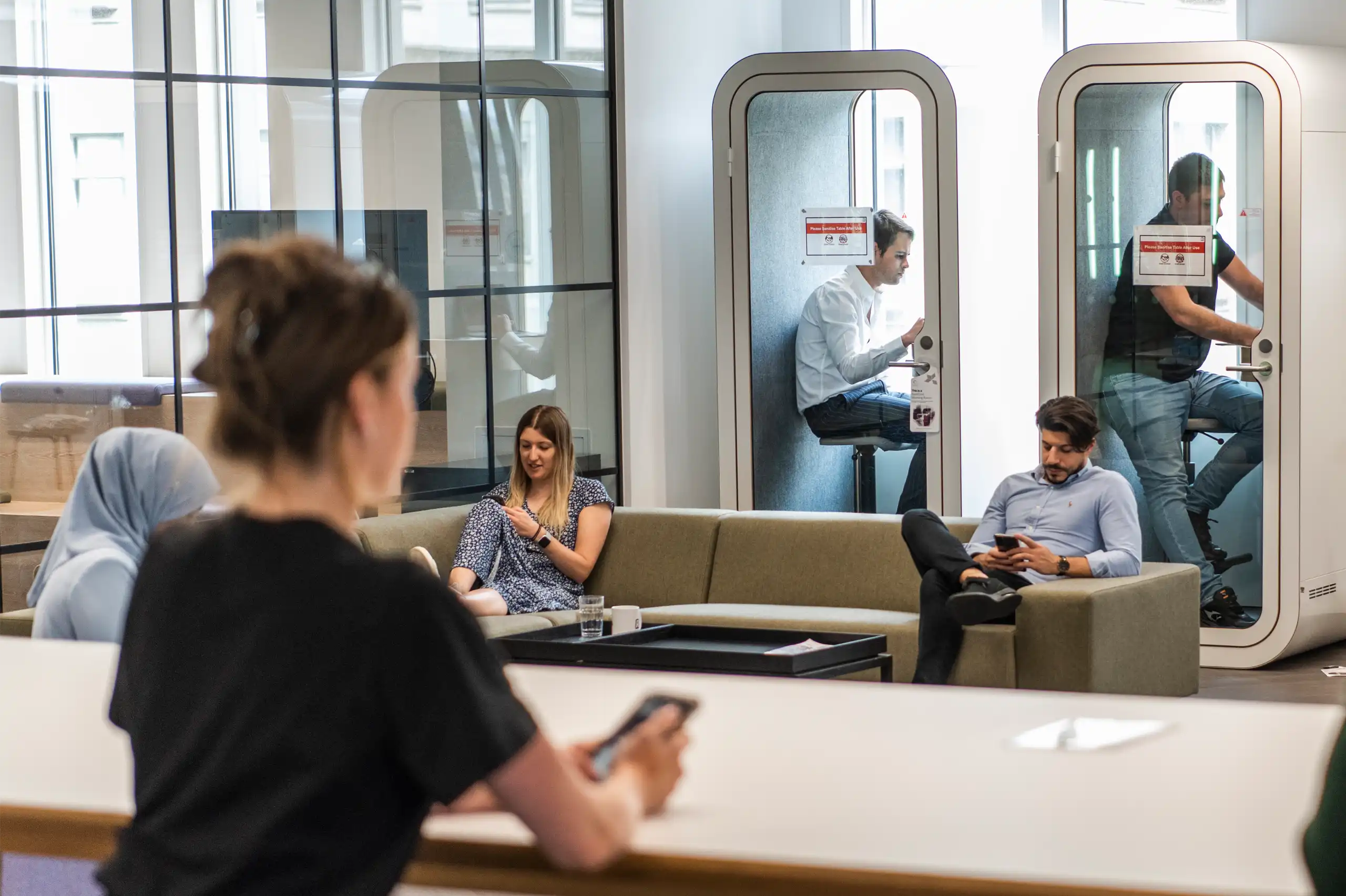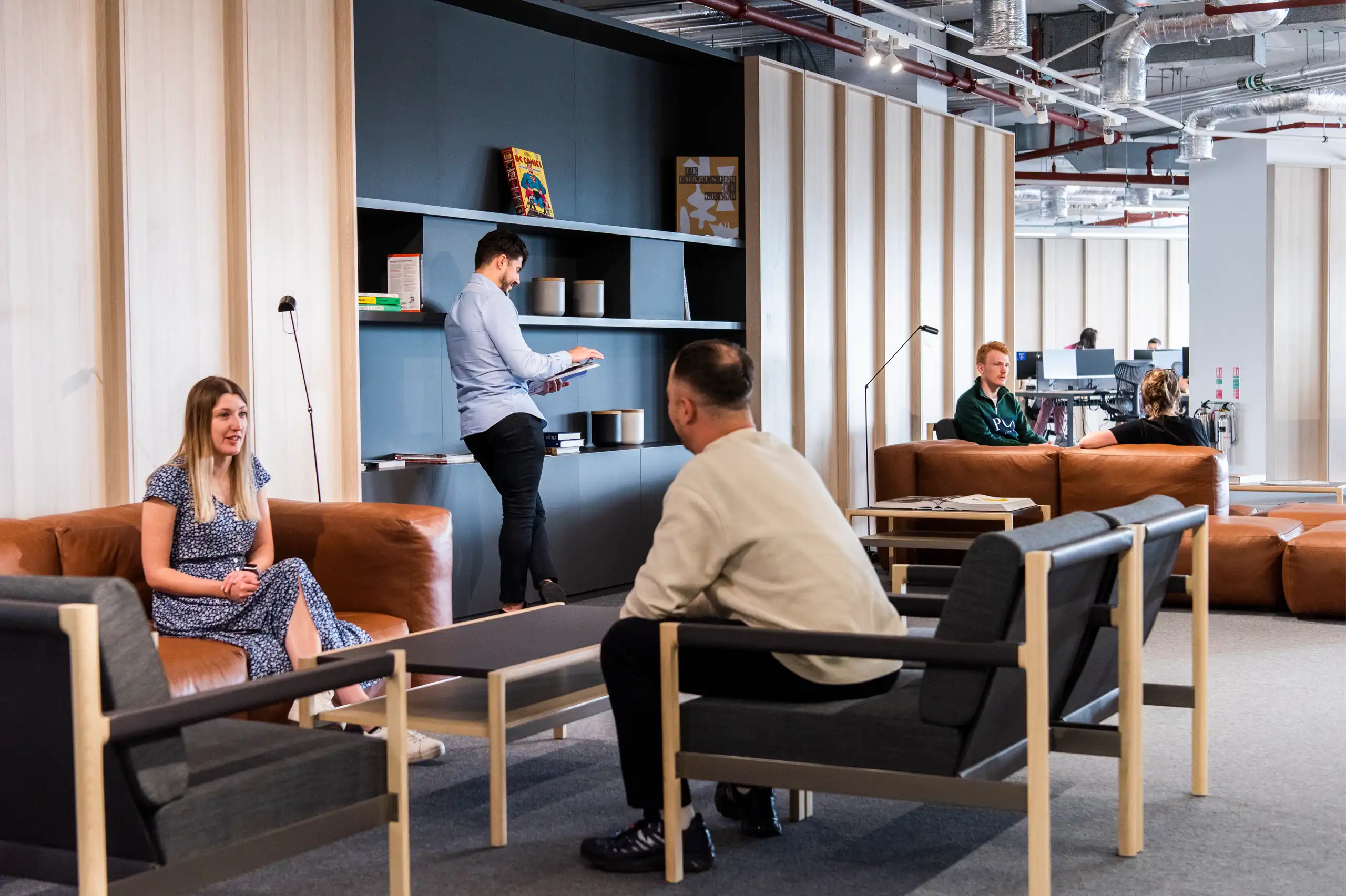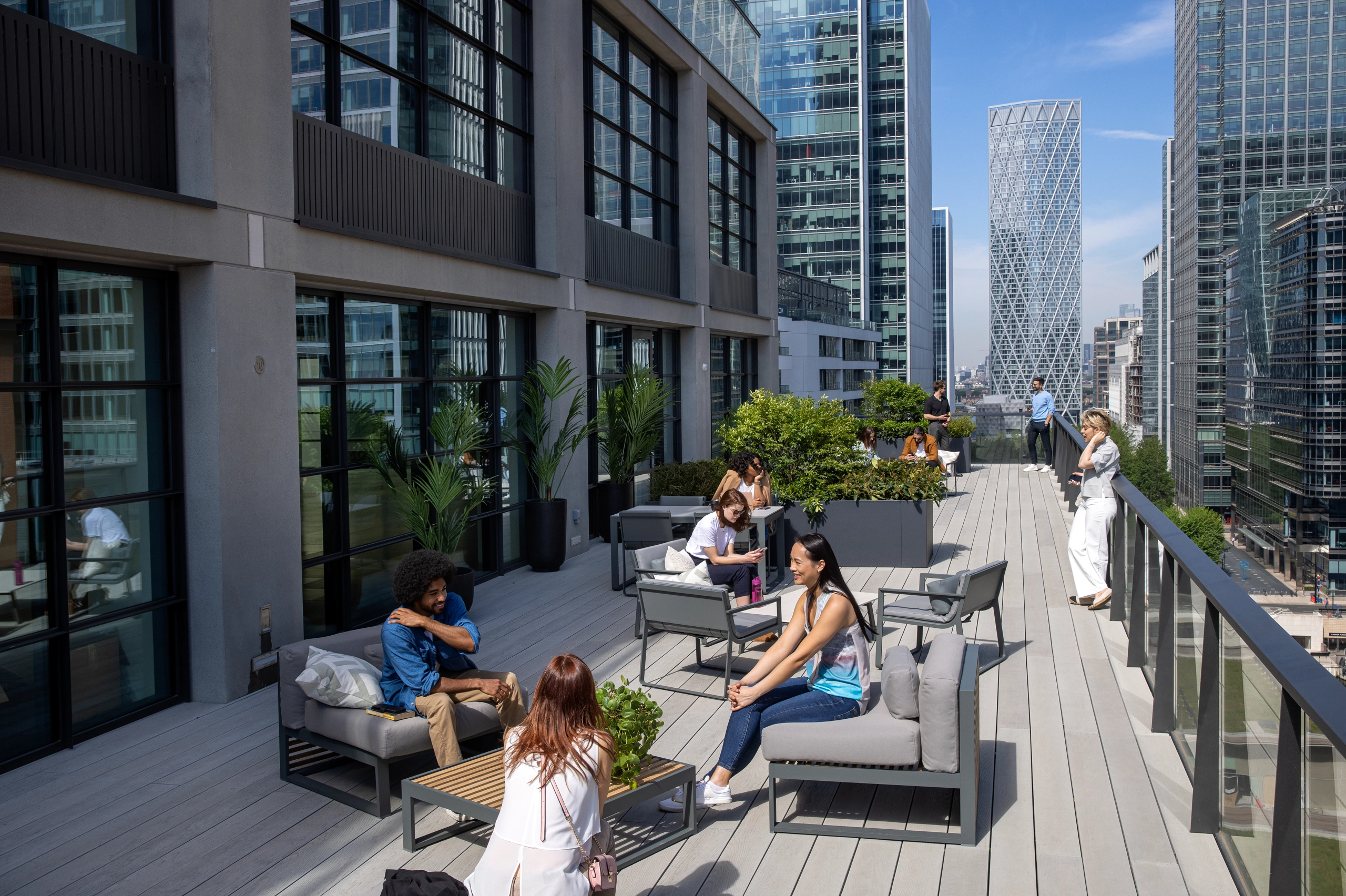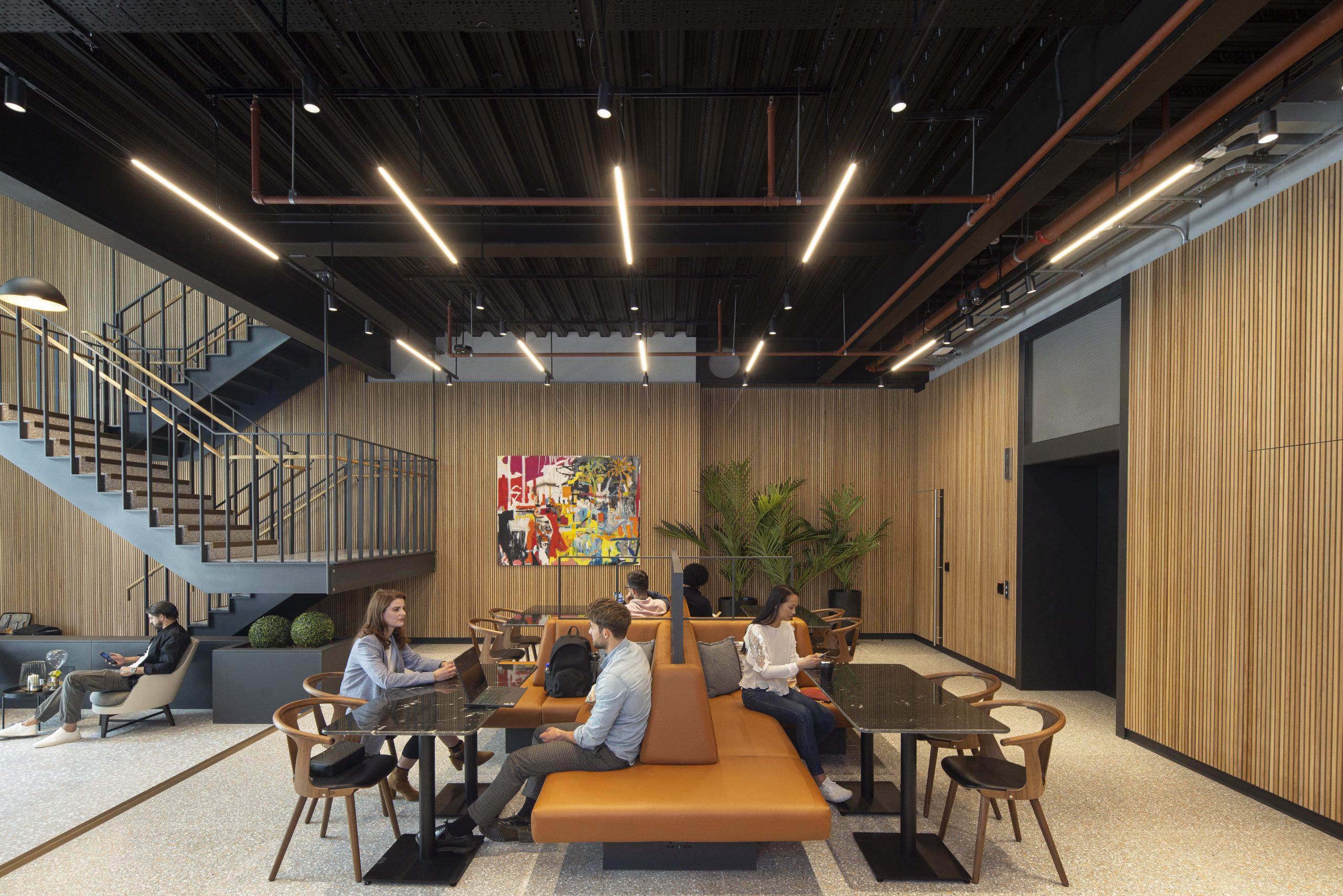
Navigating Hybrid and Flexible Work: Tips for a Productive Work Environment
Throughout the pandemic, there was a pivotal moment when the significance of an office came into question. Subsequently, the world has come to recognise the fundamental importance of an office in fostering productivity and shaping workplace culture. However, this realisation has presented us with a unique opportunity to redefine how we utilise the office space for a more positive and impactful future..
That change is what’s taken place in the intervening years, with the rise of hybrid working and the redefining of the workplace as an opportunity to bring people together, facilitate specific tasks and needs, and to provide a reinvigorated sense of purpose for team members and clients.
In this article, we look at how flexible workspaces and hybrid work environments are the key to enabling and maximising the benefits of hybrid working for all business stakeholders, from employees to clients and employers themselves.
We also look at how Canary Wharf facilitates hybrid working with a variety of office leasing options, as well as providing a carefully curated estate that attracts and supports workers across different demographics and skill sets, inviting them to join a vibrant and inspiring community.

Understanding hybrid work and flexible office space
Hybrid work is defined as a form of flexible working where people spend some of their time working remotely and some of their time in the office. The parameters around hybrid working are open to debate – perhaps people come into the office on set days, or according to specific tasks.
Flexible workspaces are working environments that support a variety of layouts to meet the needs of different tasks and volumes of people. That might include modular furnishings, moveable walls and non-fixed desks for example – all of which can be delivered thanks to our culture of collaboration and variety of ready to work or build your own workspace options. It may also refer to shared office space that can be scaled according to need, such as Canary Wharf’s Level39 tech hub.
Hybrid working is proving to have a vast array of benefits in modern working culture, supporting employee wellbeing by reducing commuting time, giving employees more autonomy around their schedules and extra time for health and wellbeing activities. It also gives people the power to find the best ways to support their own productivity. For example, while some tasks (such as collaborative working) might be best served in the workplace, others, (such as quiet independent working) might be better undertaken at home or in an environment of one’s own choosing. Unlike fully remote working, the option of an office space protects, enhances and nurtures company culture and connectivity, but the freedom afforded to employees through a flexible approach means that individuals feel better supported and are able to ultimately be more productive.
Many employers are seeing this trend as an opportunity to embrace a new working mindset, creating offices that are designed to be destinations that employees look forward to visiting. For example, those at the forefront of leadership are creating dynamic working environments with facilities ranging from gyms to cafes, and locating themselves in places where team members can enjoy nearby amenities and socialising with friends and colleagues outside of working hours. What they’re realising is that to futureproof the business with a pipeline of talent, their office needs to have the internal design that creates a positive and healthy environment, whilst also being part of an ecosystem that supports the lifestyle and wellbeing of their team. This is where our MadeFor: services are especially powerful, helping Canary Wharf tenants to enjoy fully-fitted and managed spaces that are designed around the company, its team and their collective wants, needs and aspirations.
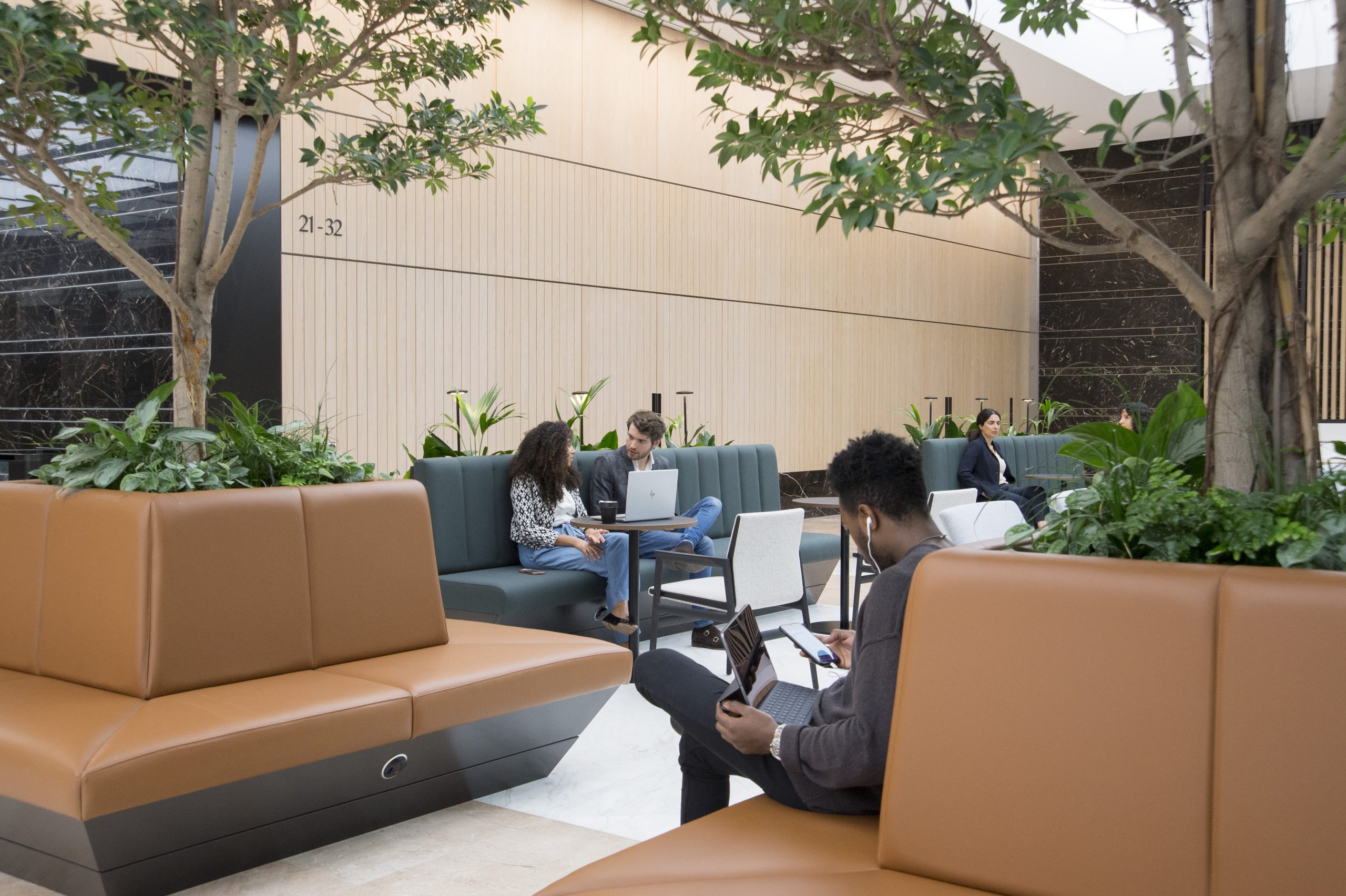
Does hybrid work increase productivity?
Hybrid work and productivity are deeply interconnected. As of 2023, it’s estimated 28.2% of people work a hybrid model, and it remains on an upswing with 98% of workers wanting to work remotely some of the time, according to stats presented by Forbes.
Naturally, some industries and tasks lend themselves to hybrid and remote working more than others, with computer and IT sectors at the top of the charts, followed by marketing, accounting and finance and project management. Interestingly, 57% of workers said they would look for a new job if their current company didn’t allow hybrid and remote work. All of that points towards a powerful case for hybrid working and maximising its potential, before we even get to the question of hybrid work and productivity.
On this score, Claire McCartney, senior policy adviser for resourcing and inclusion at the CIPD was reported saying: “Employers who listen and are open to testing, learning and adapting will benefit from a more diverse workforce and the ability to retain and attract a wide range of talent. This is particularly crucial at a time where the labour market is so tight. Everyone should have the chance to benefit from more choice about when, where and how they work. This can lead to increased wellbeing and engagement, and enhanced performance, all of which can lead to the productivity gains many employers are reporting.”
The benefits of hybrid work for employees, both in terms of time spent at the office and the ability to move around different working zones within the workplace, are proving to be wide reaching. Collectively, these amount to two things – better physical and mental health, and improved productivity as a result.
Significantly, hybrid working, distinct from fully remote working, has been shown to empower people to maximise their productivity according to task. For example, they may feel more productive when it comes to idea generation and collaboration when in the office, but more productive when it comes to focused working when out of the office or in specially designed areas of the office such as booths or pods.
To add some numbers into the mix, in a Boston Consulting Group study, 75% of employees working remotely reported being able to maintain or improve productivity on their individual tasks. That said, reviewing U.S. Bureau of Labor Statistics, Kostas Dimas, President at K. D. Capital & Associates, LLC wrote on LinkedIn, deducing that much of the impact on productivity with remote working is down to the individual. Again, this is where a hybrid or flexible approach with choices around workplace structure is especially powerful. He noted: “workers with higher educational attainments, workers who are older, workers that labour full-time, and white-collar professionals are much more able to remote work.”
Mounting evidence indicates that hybrid work and productivity are connected, but the pivotal factor is how it’s done, and the key seems to be giving employees the choice to find a way of working that’s best for them. To facilitate that process, the Canary Wharf team not only make a variety of office spaces available and customise them to requirement, but one of their most important roles is offering support and guidance to occupants on how best to create the best space for their team, built around your needs.

Benefits of hybrid working for employees
There are benefits of hybrid working both for employers and employees seeking to be a proactive part of the future of work. By embracing a more fluid and connected approach to the working environment, studies show that businesses benefit from being far more attractive to top talent, and that retention rates for valuable employees are also enhanced. Fundamentally, this is because employees also benefit, on both a personal and professional level, from a cultural mindset represented and enforced by the flexible office infrastructure – one which supports individual autonomy, trust and personal growth.
As a result, recognised benefits of flexible and hybrid working include:
- Improved employee work-life balance
- Greater ability to focus with fewer distractions
- Employees have more time for family and friends
- Saved commuting time and costs
- Higher levels of motivation
- Redefines collaboration
- Renewed purpose in the workplace
- Hybrid models allow individuals to experience the benefits of multiple working locations
- Greater trust and autonomy for employees
- Improved employee retention rates
Another of the often-discussed benefits of the flexible working environment on the Canary Wharf estate is the variety of industries that it’s set up to support. For example, not only is it home to our L39 tech startup hub, and is famously home to an array of leading professional services, but there’s also the state-of-the-art life science community at 20 Water Street.
Extending the community further, is the emergence of One North Quay (set to be Europe’s largest and most technically advanced lab building in 2028), all of which support businesses at all stages of growth and maturity. Employers and individuals can go from hot desking to headquarter buildings, shell and core to fully managed, and everything in between.
This level of diversity both in terms of sectors, skills and business age, is the gift that keeps on giving. It creates opportunities and conversations that wouldn’t otherwise happen, thanks to an environment that’s curated to encourage communication and interaction through flexibility.
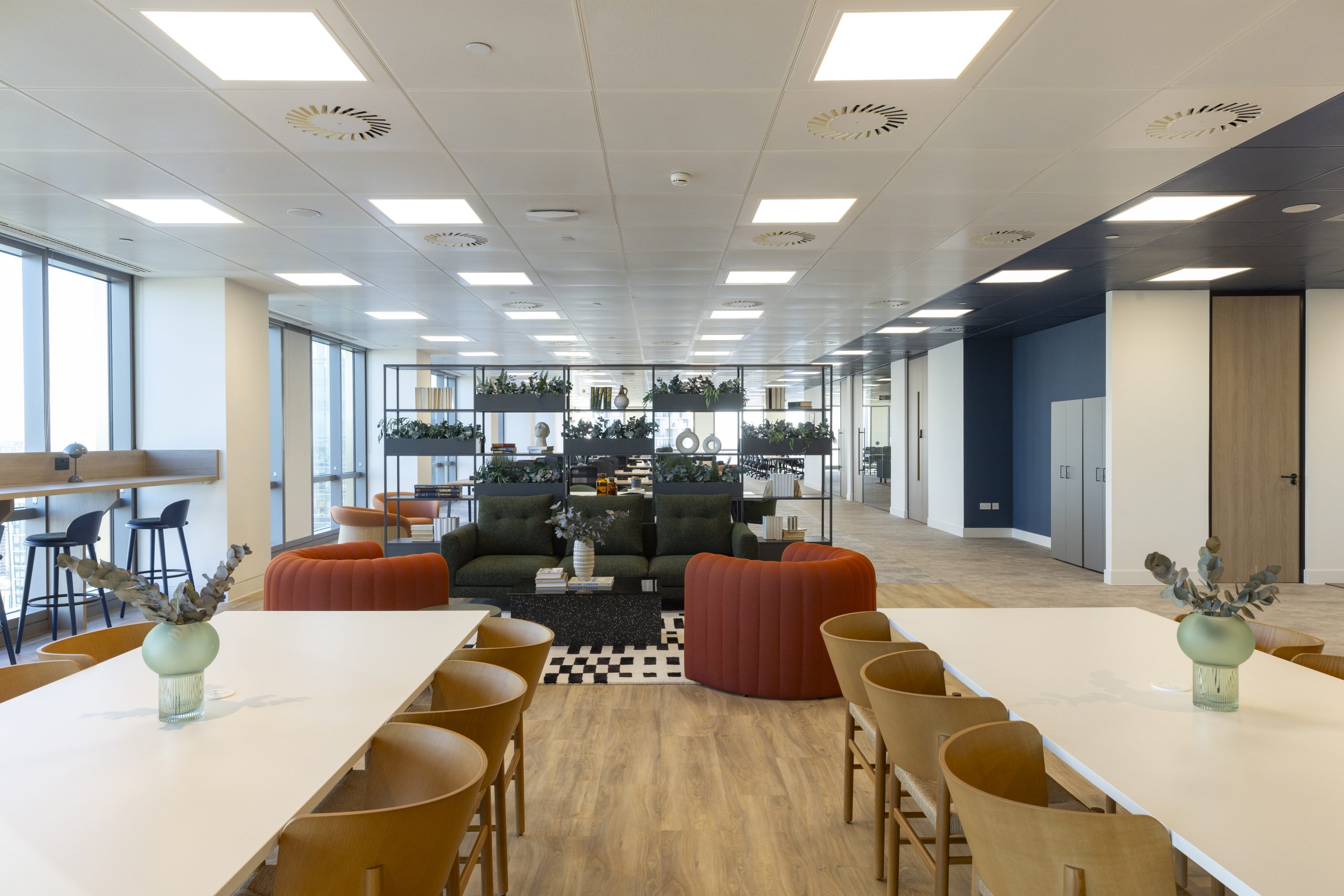
Increasing your work/life balance
There are ways that both employers and employees can support a better work/life balance for team members. Enabling flexible working is top of the agenda, allowing people to make the best of office facilities as well as home working.
Much of how to create that depends on the workplace culture, creating an environment of health, wellbeing, trust, flexibility and care, while upholding those values through the office infrastructure with carefully considered facilities and capabilities. That might include easy access to shops and fitness services, as well as ensuring the office is a healthy environment with features ranging from lots of natural light to readily available breakout areas and ergonomic seating options.
A key factor in flexible working is not just whether employees are in the office or at home, but how workplace design for flexible office space can encourage healthier behaviours as well. For example, flexible workplaces support physical movement throughout the day and connectivity with colleagues rather than seeing individuals siloed at a set desk all day. Equally, dedicated spaces for focused work vs collaborative work are also pivotal parts of the workplace of the future.
With Canary Wharf’s variety of offices, ranging from the opportunity to hire a single desk to fitting out an entire floor to suit the culture and values of your organisation, work/life balance can be an intentional prioritisation, benefiting businesses, employers and employees. Furthermore, the estate places businesses, often ones that are traditionally located on remote business estates, within a thriving and sustainable community that nurtures connectivity with entertainment, shops, fitness facilities, green spaces and more. It’s more than a destination that supports work – it integrates a balanced lifestyle into the working week, which is a powerful attraction to both established and emerging talent as well as clients.

Benefits of working in canary wharf
To continue on this last point, it’s not just what’s in your office, but what’s around your office that makes a difference to work/life balance and flexibility in the working week. Easy access amenities and facilities that provide both entertainment and practical lifestyle support so employees can maximise their time are invaluable.
Canary Wharf isn’t just a place where you can find state-of-the-art offices. As an estate, it also offers an infrastructure and a community that is both inspiring and supportive to businesses and individuals. There are acres of green and open space including parkland and mature trees for greater wellbeing and harmony with nature. In particular, these spaces provide beautiful environments for outdoor lunch breaks and exercise in the summer months.
Furthermore, a roster of seasonal activities from open water swimming to foodie festivals means that there’s always something to look forward to throughout the year. Meanwhile, shops range from the practical to the luxurious, and there’s a vast range of fitness facilities to suit and inspire different wants, needs and preferences. In terms of flexibility, this means that employees don’t need to tack health and leisure onto the end of the day or travel to different places, they can integrate it into the working day and week for a better mindset and more quality time.
Team members can grab their food shopping on the way home rather than making an extra trip on their commute. They can live locally, enrol children in local schools, and enjoy easy access to the rest of London with excellent transport links. There’s also a wealth of restaurants for teams to gather together, have coffee meetings outside the office, or even visit at the weekends with friends and family.
In effect, Canary Wharf is designed not merely to be a workplace but to be the physical definition of work/life balance, enabling people to maximise and enjoy the benefits of both.


Download the App
Download the Canary Wharf App today and join our online community here at Canary Wharf and access the latest offers and promotions, events and news.

Wharf Connect
We’re thrilled to introduce Wharf Connect – a FREE membership community tailored for early career professionals based in the Canary Wharf estate.
